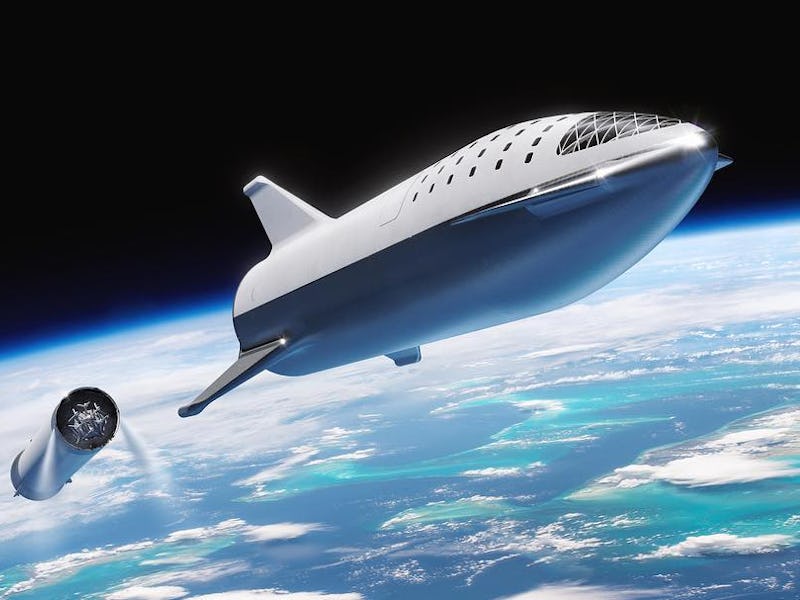Starship: SpaceX Plans Show Visit to the Edge of Space With Mars-Bound Ship
The Karman line could soon get a visitor.

Starship, SpaceX’s rocket designed to send humans to Mars and beyond, could soon embark on a trip to the edge of space.
The stainless steel ship, designed as a successor to the Falcon 9 and Falcon Heavy, has impressed space fans with its increasingly-ambitious hop tests. Documents revealed Friday by Business Insider detail company plans to take these flights to the next level, as it concludes a three-phase development process for its rocket ship.
The Starship, currently under development at facilities in both Florida and Texas, is designed for a number of ambitious missions. It’s designed to transport up to 100 people into space, originally announced in September 2017 with a pressurized cabin space similar to an Airbus A380. Planned trips include a trip around the moon with Japanese billionaire Yusaku Maezawa, along with six to eight artists, expected to launch in 2023. Perhaps the most ambitious is the goal to send the first humans to Mars, culminating in a city on the planet by 2050.
Documents from the Federal Aviation Administration, finalized on May 21, outline how SpaceX plans to spend two to three years developing the Starship so it can reach space:
- The first phase covers wet dress, static fire, and short hops. This culminates in a short hop of a few centimeters off the ground. SpaceX completed this stage in April using the “Starhopper,” a shortened version of the final Starship that measures around 60 feet high. A company representative confirmed to the publication that this stage was complete.
- The second phase covers the Starship’s current steps. The document covers a hop measuring up to 150 meters, and a hop measuring up to three kilometers.
- The third phase describes “engine ignition and thrust to lift the Starship to 100 kilometers, flip the Starship at high altitude, and conduct a re-entry and landing.”
The current phase may have changed since the document was written. SpaceX completed a hop test of 150 meters with the “Starhopper” on August 27, in a spectacular display:
CEO Elon Musk announced in the aftermath that a presentation would be held on September 28, the 11-year anniversary of SpaceX reaching orbit.
From here, Musk stated the company aims to fly the Starship Mk.1, a prototype of the full-size ship that measures around 180 feet tall, 20 kilometers into the air in October. This is a flight that does not fit neatly into the three-phase schedule, but it’s expected to be the first major test of the prototype.
It’s the third phase that may attract the most attention. A flight of 100 kilometers into the air would send the rocket close to what’s known as the Kármán line, the altitude where space begins. It’s unclear when this launch will take place — Musk has suggested that an orbital launch could happen “shortly thereafter” following the 20-kilometer jump in October. The three-phase plan covers two to three years, giving SpaceX a lot of leverage for deciding the timing for its first orbital jump.
From there, SpaceX could move relatively fast. The company is reportedly in talks with three telecommunications firms, which could lead to one of them using the Starship to launch a satellite as early as 2021.
“The goal is to get orbital as quickly as possible, potentially even this year, with the full stack operational by the end of next year and then customers in early 2021,” Jonathan Hofeller, SpaceX vice president of commercial sales, said at the APSAT conference in Jakarta in July.
When Musk stood on stage in 2017 and described his plan to get to Mars, it seemed like science fiction. Two years on, one of the key components of his plan is falling into place.